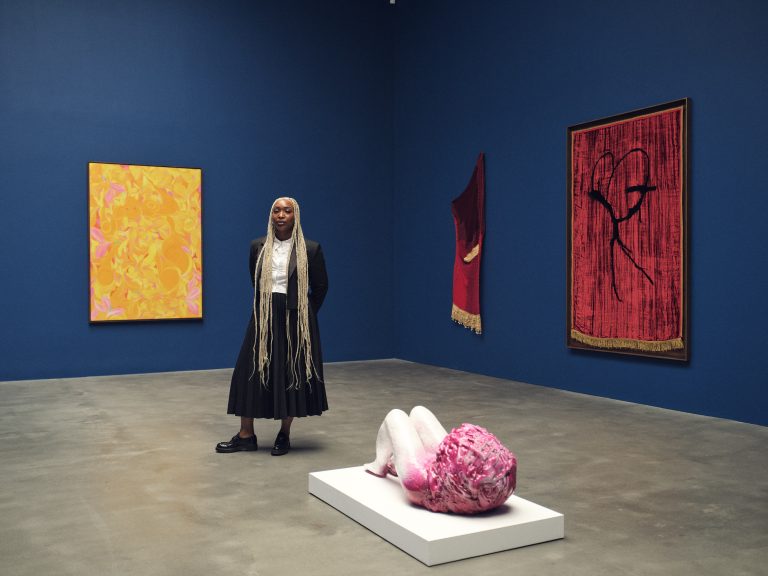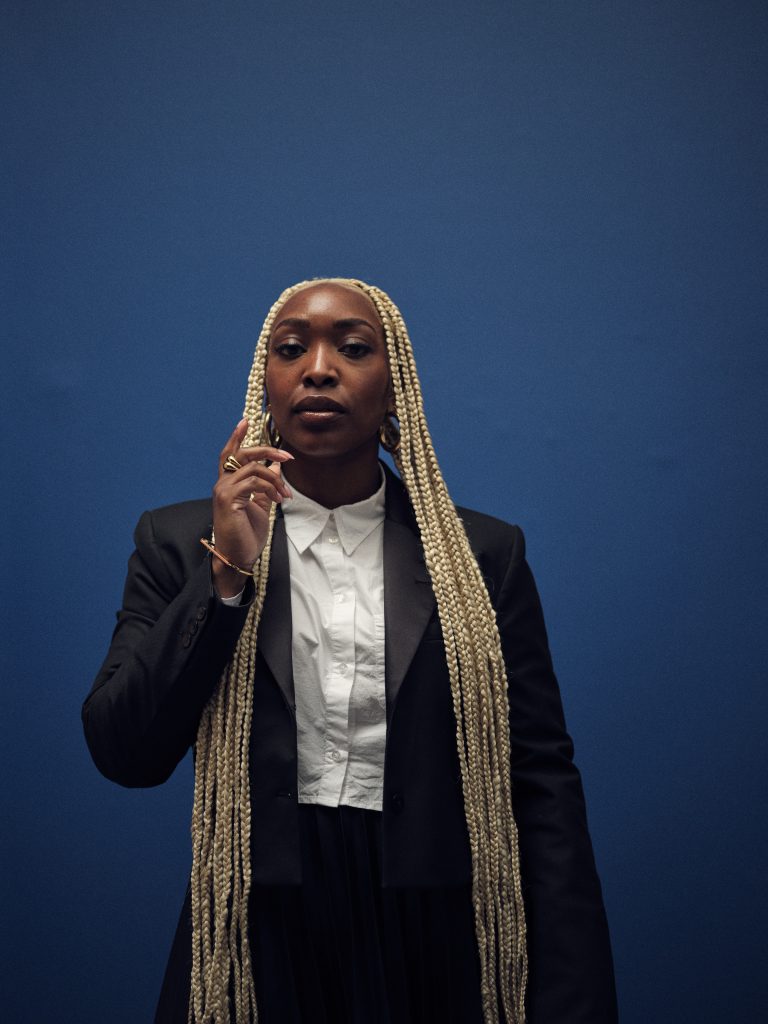
Photography by JAKE GREEN
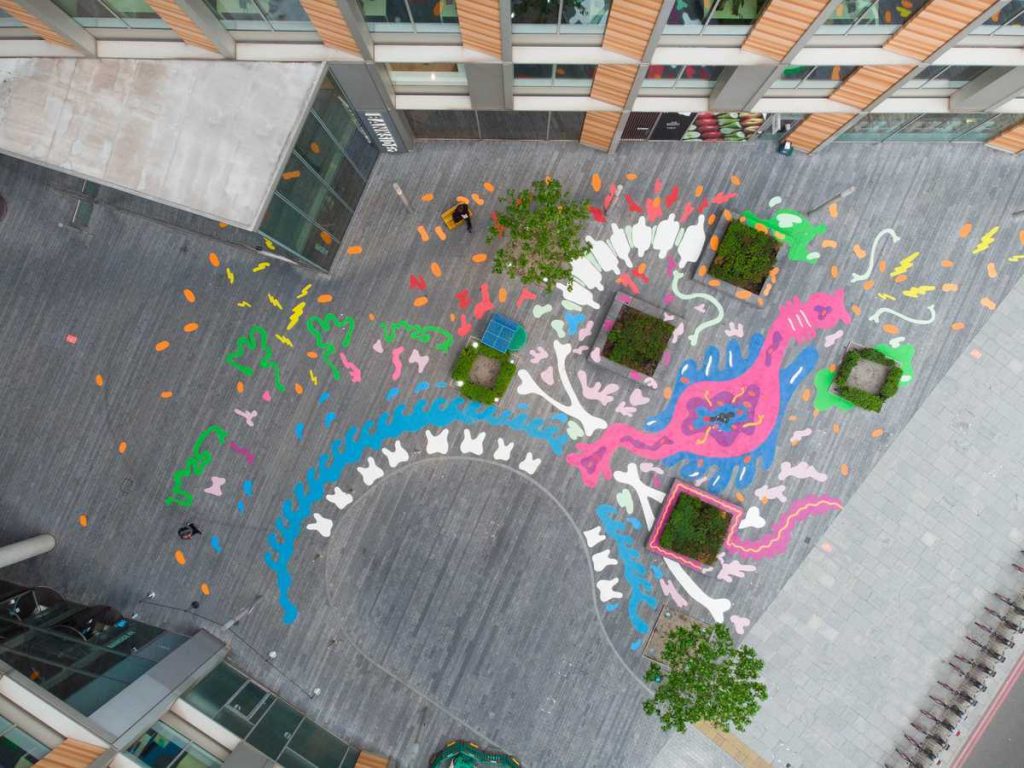
Gastro Gusto, part of Better Bankside initiative
Photography by MIKEY LEE courtesy of TATE
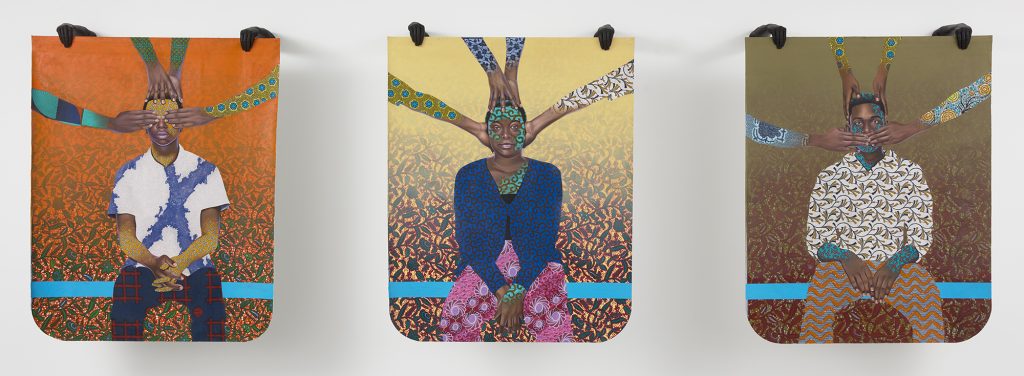
Make you no see, Make you no hear, Make you no speak, 2022
Photography by CHRIS GARDNER courtesy of the artist
Péjú Oshin’s journey into curating was unexpected yet undeniably destined, blending her love for architecture, fine art, and cultural identity. Her curatorial practice is deeply rooted in the exploration of liminal spaces – those transformative moments between places, identities, and cultures. From her groundbreaking exhibition Rites of Passage at Gagosian to her work with institutions like Tate and Barbican, Oshin is dedicated to reshaping the way we encounter art and ourselves. In this interview, she discusses the intersection of care and curiosity in her work, the importance of challenging linear narratives, and her vision for an increasingly globalised art world.
hube: Could you tell us a bit more about your background and what inspired you to pursue your current career path?
Péjú Oshin: My journey into the art world was unexpected but felt destined. As a child, I was obsessed with K’Nex, drawing, and watching my eldest brother work on his art projects. I was also captivated by the work of Giuseppe Arcimboldo, whom I learned about during primary school. Though I graduated with a degree in architecture and design, I was always drawn to the arts, having studied fine art at both GCSE and A levels. My university tutors often wove visual arts into the program, from designing art galleries to creating scale models of artworks by artists like Alberto Giacometti. We took still life classes, and our group visited galleries and museums frequently. I began to realise that, while I viewed architecture as a form of public art, I was more interested in what took place inside buildings – the memories formed and the dialogue between the internal and external.
My first taste of curating came through a display at the London Transport Museum, where I joined their Young Freelancer program in the mid-2010s. This experience, followed by my role as a curator at Tate, ignited my passion for connecting people with art and culture. I see museums and galleries as essential spaces to encounter beauty and wrestle with the complexities of being human. Looking back, my architectural background gives me a unique perspective on my curatorial, writing, and teaching practice, blending spatial thinking with artistic expression.
h: How would you describe the core focus of your work in connecting people to art, cultural, and educational experiences?
PO: The core of my work centres around care and curiosity. I strive to create spaces and experiences that foster dialogue, challenge perspectives, and celebrate diverse narratives. My aim, alongside the artists I work with, is to push the boundaries of artistic expression while making art accessible to a wide range of audiences. In many ways, I see myself as a facilitator, helping people reconnect with parts of themselves that modern-day life often suppresses – whether it’s schoolchildren, recent graduates, or business professionals. For those already engaged with the arts, my role is to enhance their knowledge, acting as a trusted guide and creating more opportunities for meaningful dialogue.
h: In your perspective, how does ‘liminal theory’ shape your approach to curating and working within the intersection of art, style, and culture? As the curator of ‘Rites of Passage’ at Gagosian’s Britannia Street gallery, could you explain the inspiration behind exploring the concept of liminality through this exhibition, especially within the context of migration and cultural identity?
PO: Liminality resonates deeply with me, both personally and professionally. It has become a framework through which I explore art, style, and culture, helping me build worlds across different disciplines. I subscribe to the concept of ‘practice as research’, a process I began developing during my time as a curator at Tate and as an Associate Lecturer at Central Saint Martins.
The idea of ‘home’ became an anchor point for me in the early 2010s, and it has informed many of my projects, including Rites of Passage. This exhibition explores the transformative experience of being between places, cultures, and identities. The works in the show speak to material culture and the feeling of being in a state of transition. It’s a nuanced exploration of migration and identity that challenges traditional narratives.
h: In your curation of ‘Rites of Passage’, how do you aim to challenge linear narratives and offer a nuanced perspective on postcolonial Black identity and the experiences of the African diaspora?
PO: My goal with Rites of Passage was to present a multifaceted view of postcolonial Black identity and diasporic experiences, leaving room for questions rather than definitive answers. By featuring the diverse perspectives of 19 artists, the exhibition highlights cultural hybridity, displacement, and the ongoing process of identity formation within the African diaspora. I wanted to challenge the idea that linear narratives are necessary to validate experiences. Instead, the show suggests that stepping into a loop – where there is no clear start or end – can help us see patterns that reflect a broader, more nuanced view of identity.
h: What do you see as the most significant challenges or opportunities facing the world of contemporary art today?
PO: One of the biggest opportunities in contemporary art is the potential for exciting collaborations across different parts of the arts ecosystem, while still maintaining individual identities and functions. There is also a continued opportunity to leverage technology and digital platforms to reach global audiences beyond the methods used during the pandemic. It’s essential to find ways to do this without compromising the value of in-person experiences.
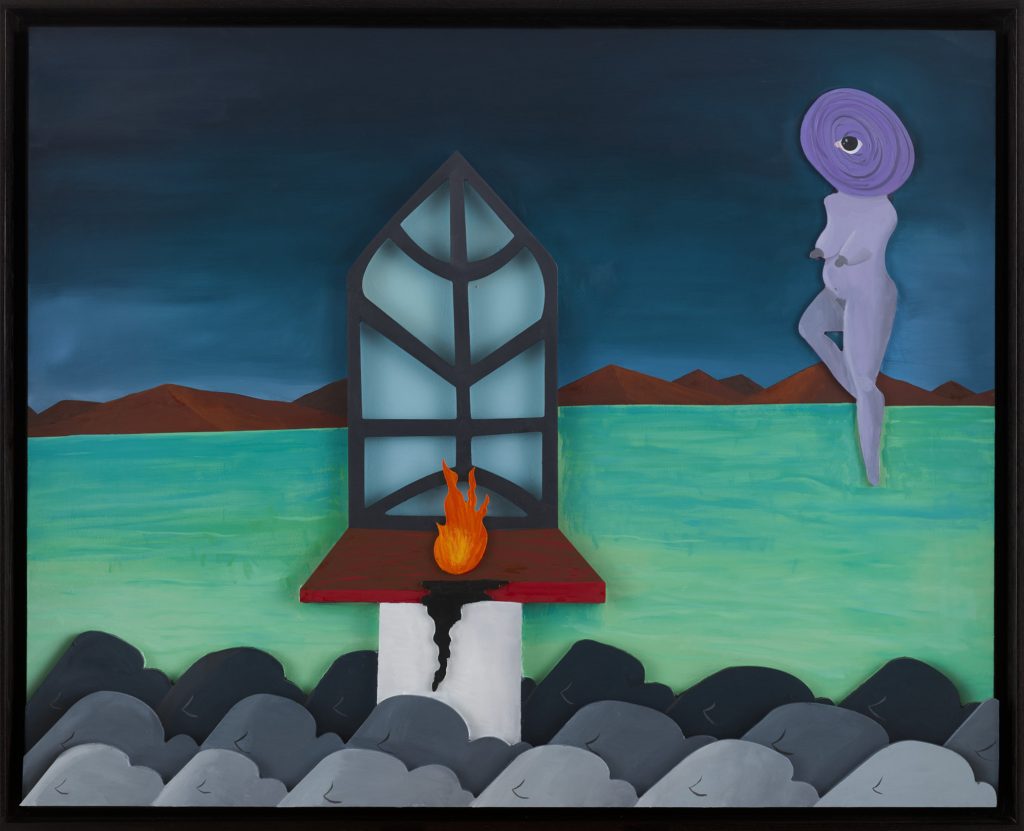
Drifting on a memory, 2022
Photography by PRUDENCE CUMING ASSOCIATES LTD. courtesy of GAGOSIAN

The Saltwater Within Us, The Depths of Our Grief, The Leagues of Our Love, 2023
Photography by PRUDENCE CUMING ASSOCIATES LTD. courtesy of GAGOSIAN
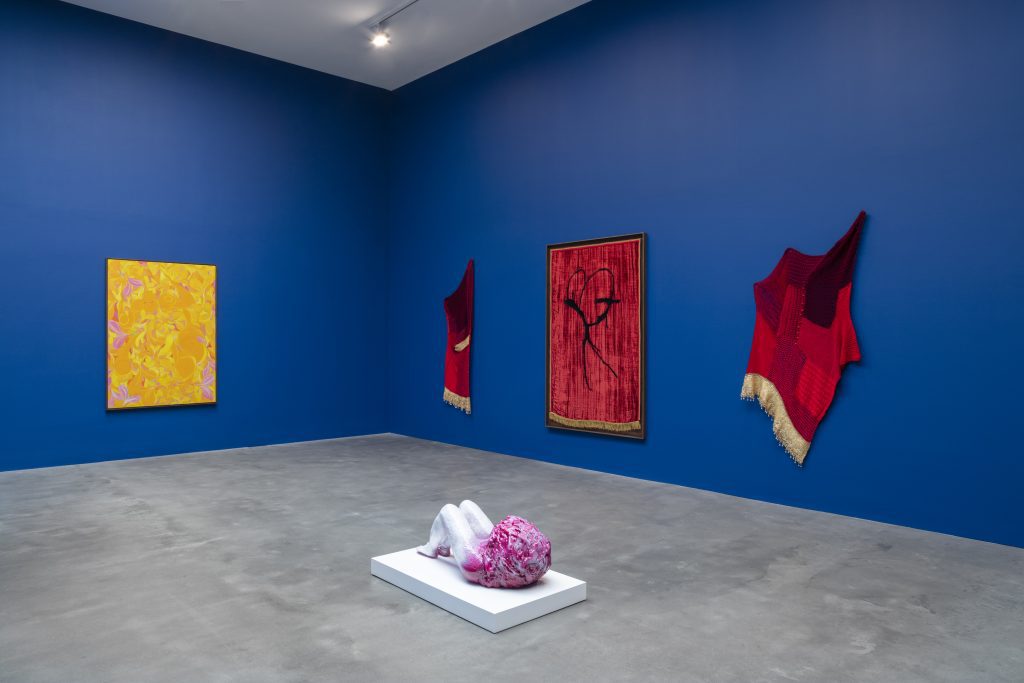
Photography by LUCY DAWKINS courtesy of GAGOSIAN
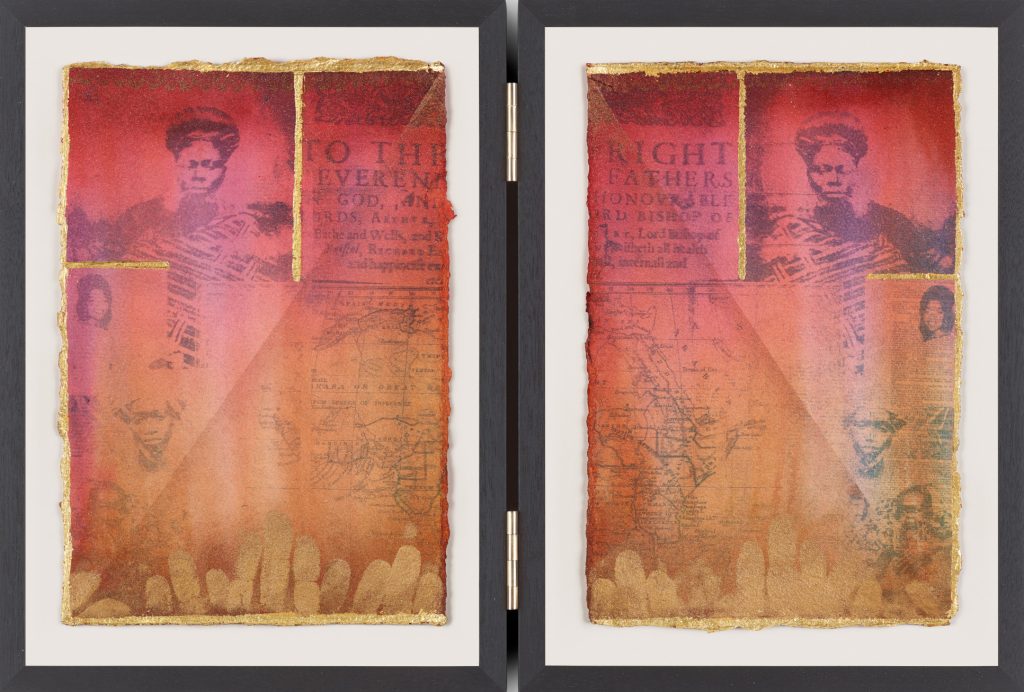
Nyɔŋma (Ten), 2023
Photography by PRUDENCE CUMING ASSOCIATES LTD. courtesy of GAGOSIAN
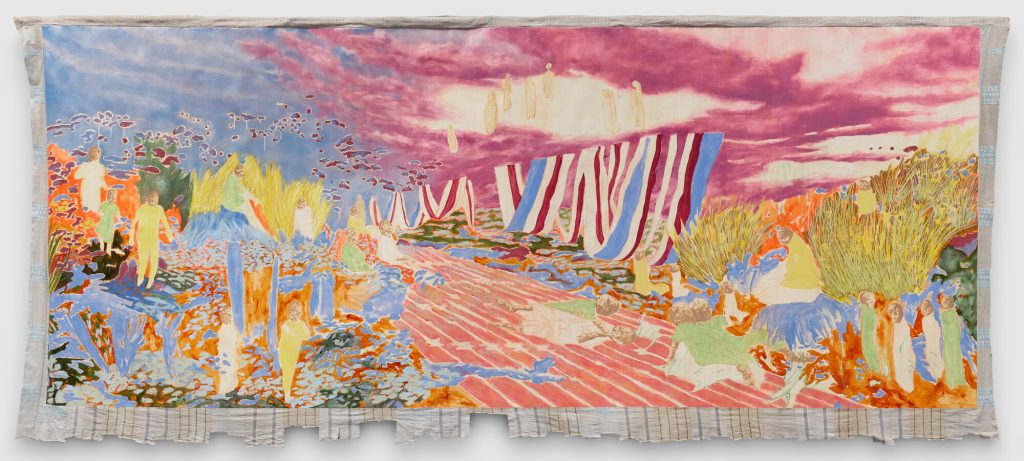
Eden, 2022
Photography by PRUDENCE CUMING ASSOCIATES LTD. courtesy of GAGOSIAN
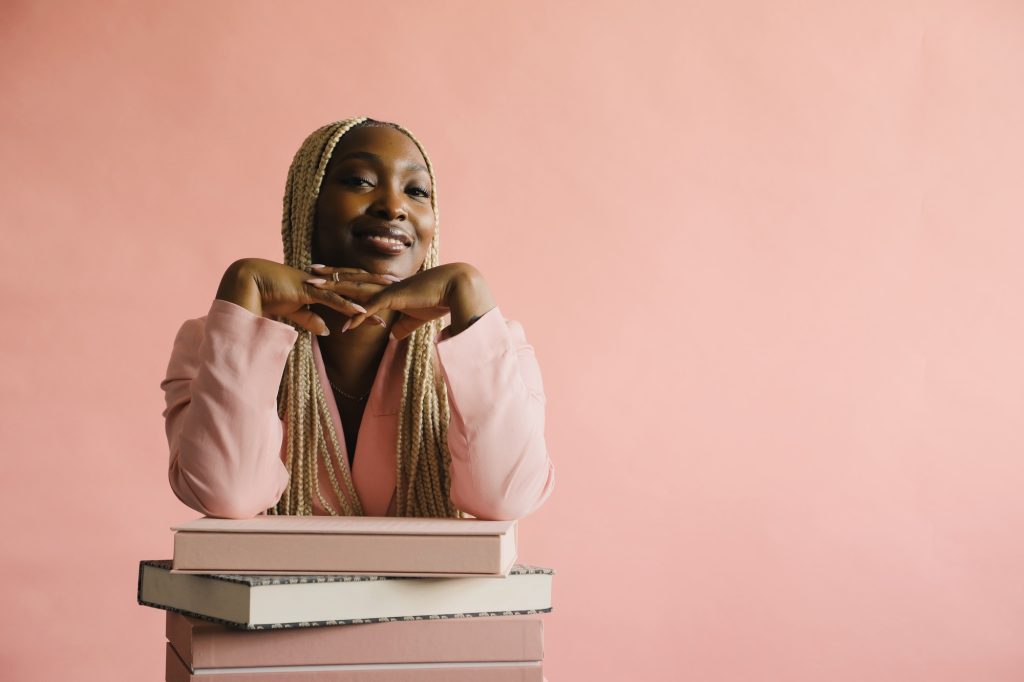
Photography by EDVINAS BRUZAS
h: Collaboration often plays a crucial role in achieving success. Could you tell us about any partnerships or collaborations that have been particularly impactful for you?
PO: Collaboration has been a crucial element in my work. Working with institutions like Tate, Barbican, and now Gagosian has allowed me – and the artists I collaborate with – to reach wider audiences and create meaningful programming. The Rites of Passage exhibition was a true collaborative effort, involving colleagues from both London and New York. I’ll never forget the opening night when 1,400 people turned up despite the transport strikes in London. It was incredible to see every part of the gallery filled with people having visceral reactions to the works. Another impactful project was Beyond Boundaries at Tate, where we commissioned five young, emerging artists to create their first public artworks. This project, launched during various stages of lockdown, showed how crucial technology was as a tool for survival and collaboration.
h: How do you envision the evolution of art curation and cultural experiences in an increasingly globalised and digitally connected world, and what role do you see yourself playing in shaping these developments?
PO: I’m interested in how curatorial practice is becoming more interdisciplinary and technologically integrated. The internet functions as a third space, creating platforms for dialogue that transcend physical boundaries. As a curator and educator, I see my role as bridging the traditional with the new, which includes the integration of digital spaces and fostering global connections. I often mention to people how much of a fan I am of TikTok – people are continuously evolving how and where they spend their time. I also see the internet as a liminal space where identity, art, and culture intersect. I aim to collaborate with those who dare to dream beyond what has already materialised.
h: What advice would you give to aspiring professionals who hope to follow in your footsteps and create a meaningful impact in curatorial practices?
PO: Stay curious! A former mentor once gave me this advice, and it has stayed with me ever since. Ask lots of questions – of yourself, your motivations, and the world around you. Centre care in everything you do. Curating is about caring for art, artists, and audiences. Build relationships, seek out diverse perspectives, and don’t be afraid to challenge conventional norms. Lean into that discomfort – it’s where growth happens.
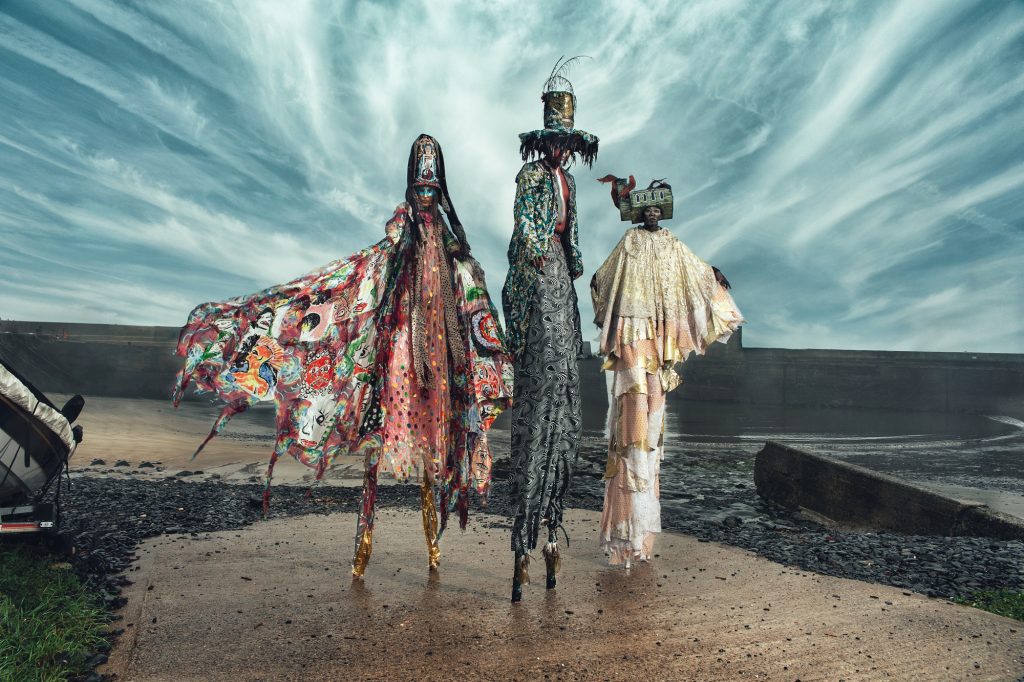
Pillars at the Port, 2022
Courtesy of the artist
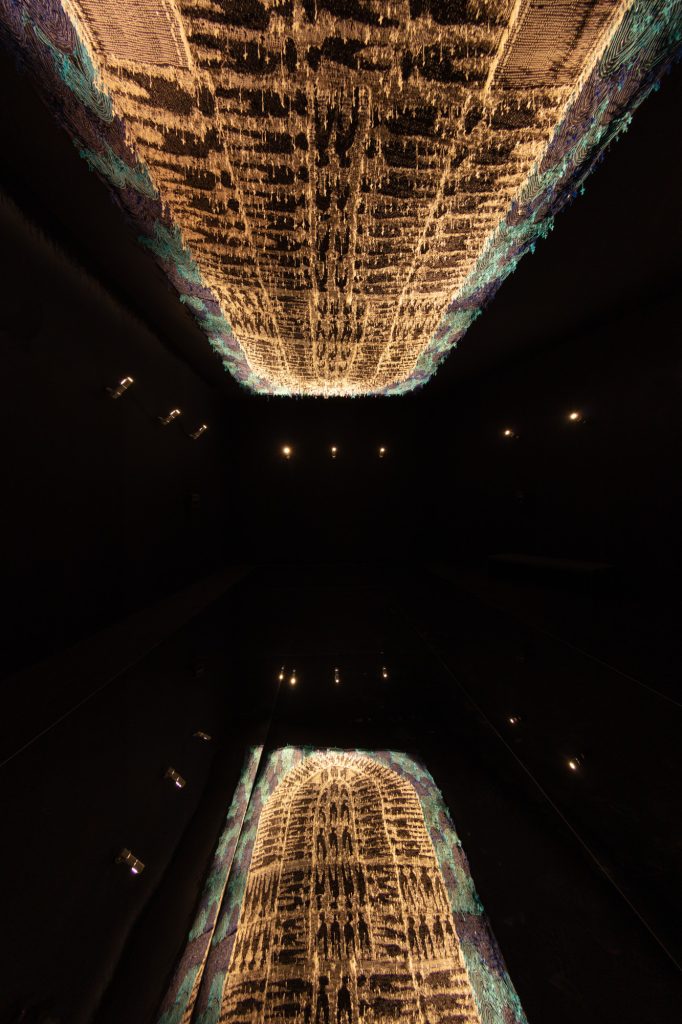
Do This In Memory Of Us, 2019 – 2020
Photography by LUCY DAWKINS courtesy of GAGOSIAN
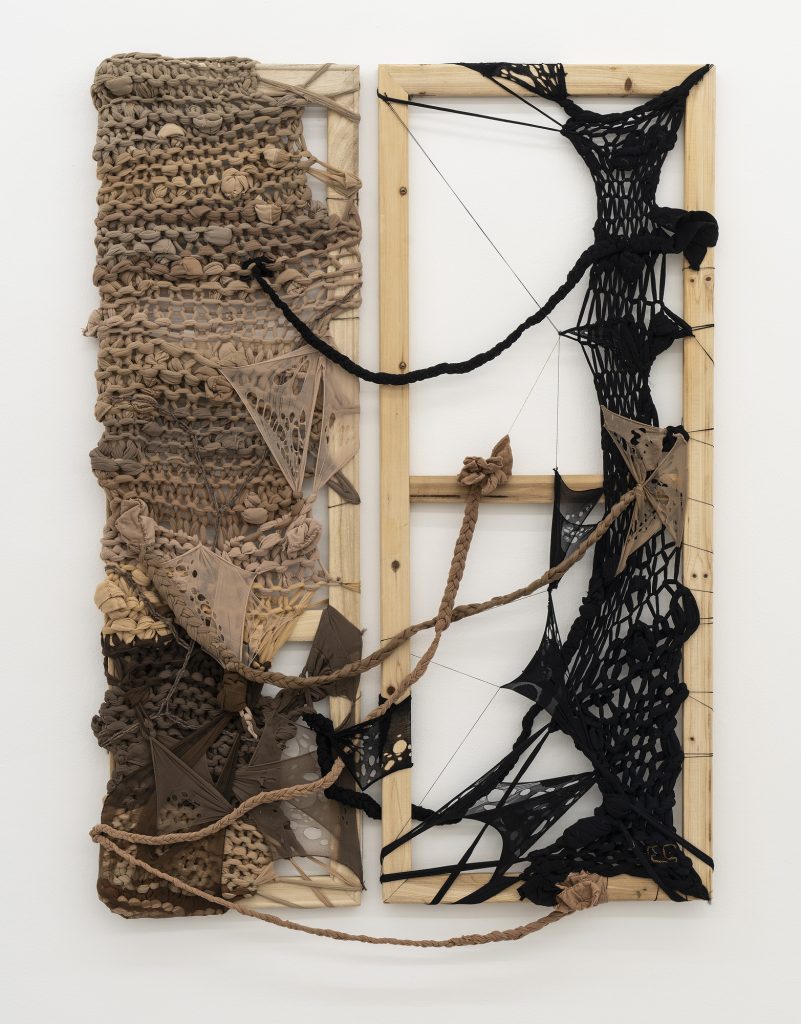
Colonialist Ravelry, an infection of mind, skin and being. Blackness hangs on, a determined survival, 2021
Photography by NOAH DA COSTA courtesy of the artist
